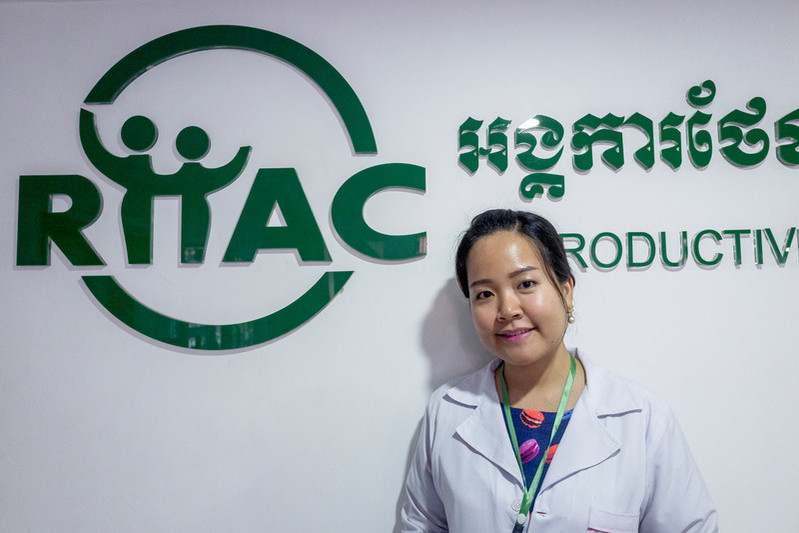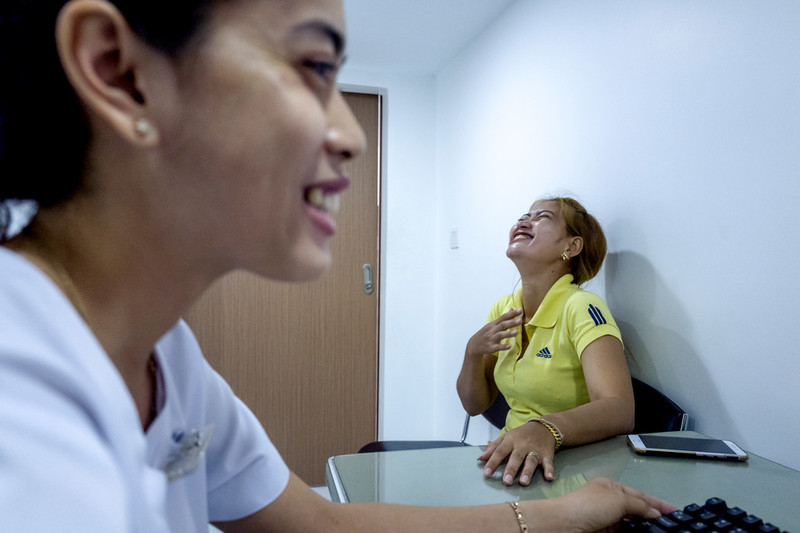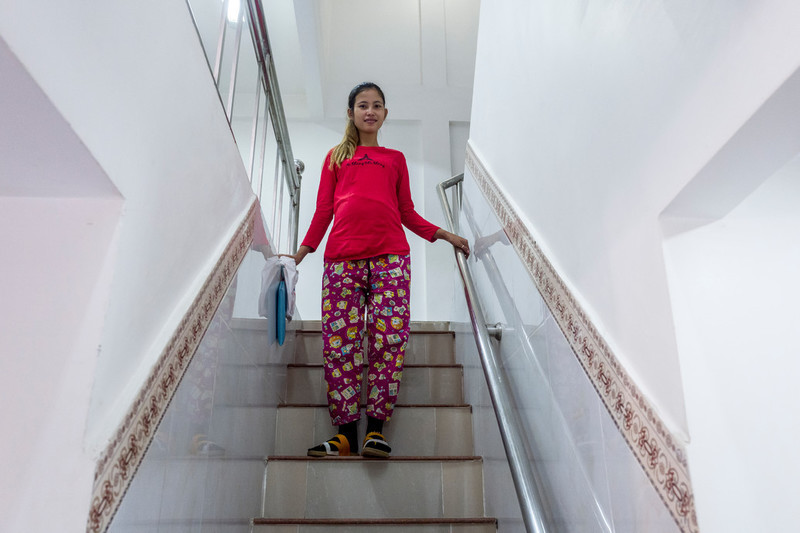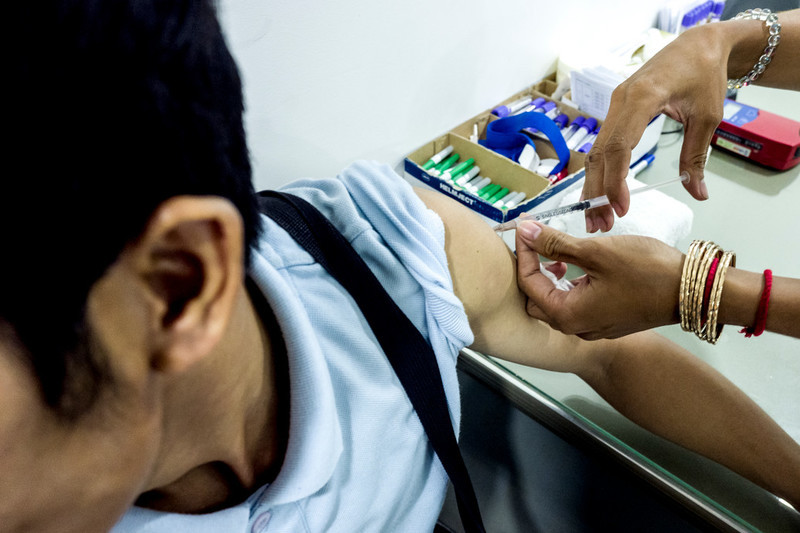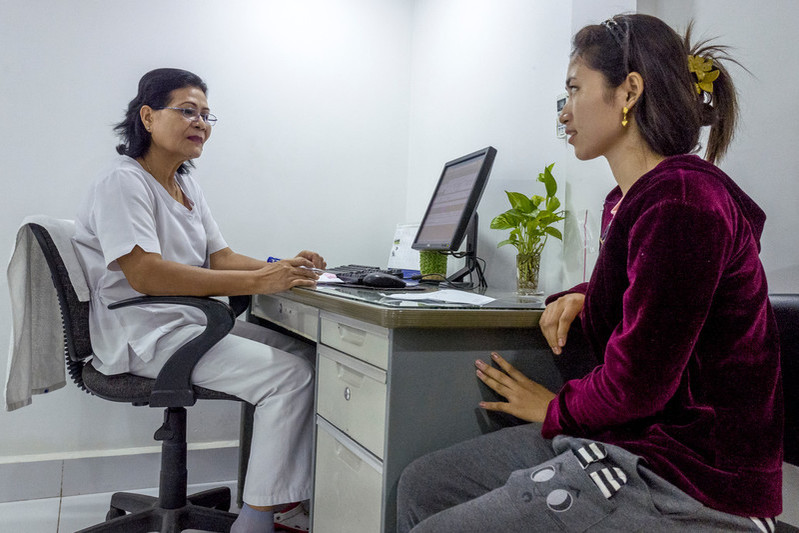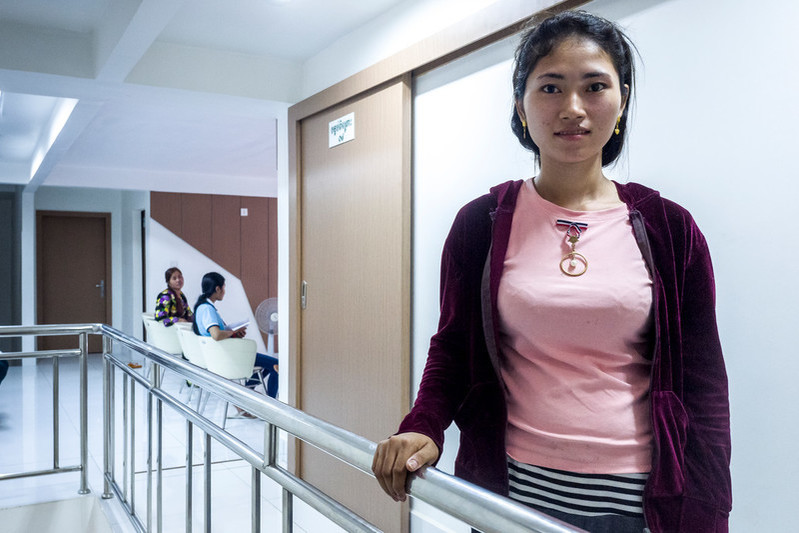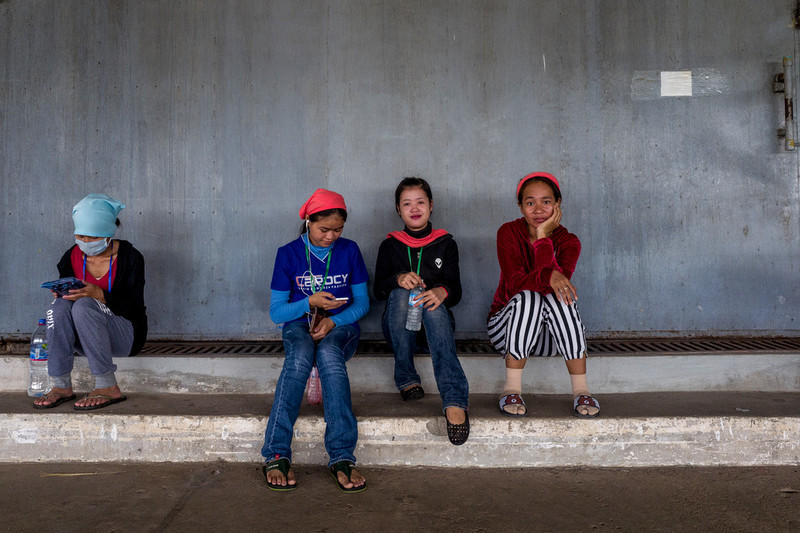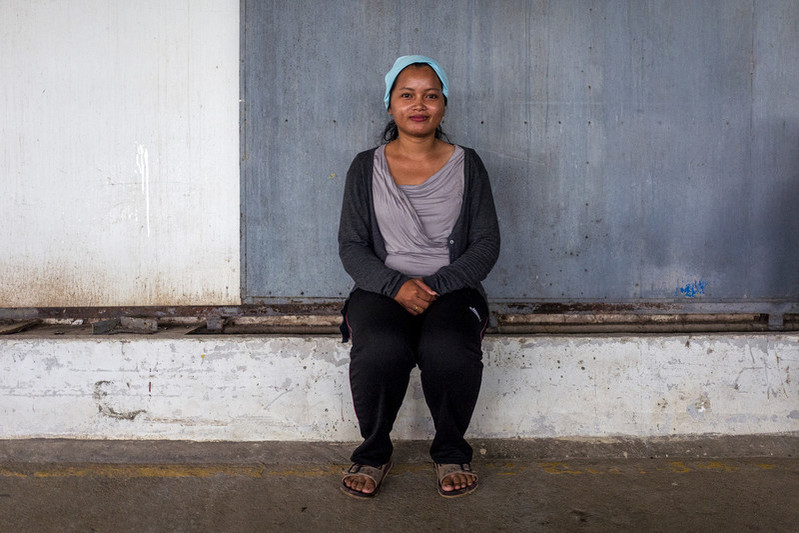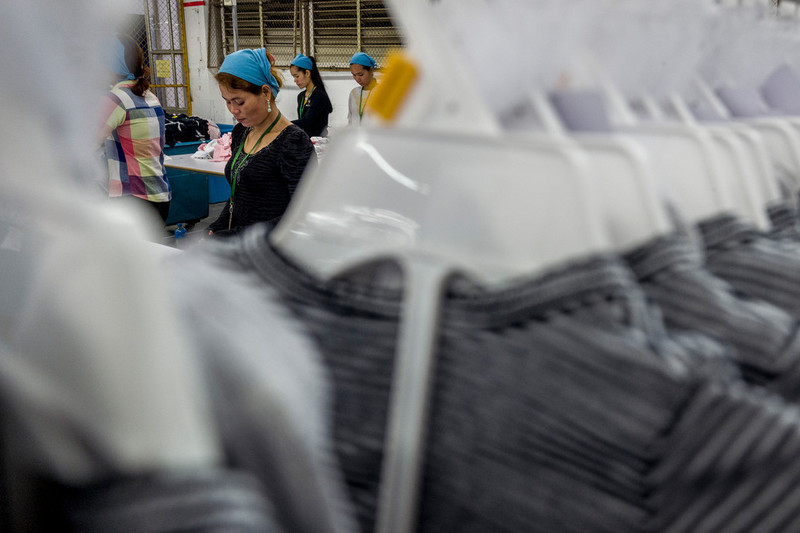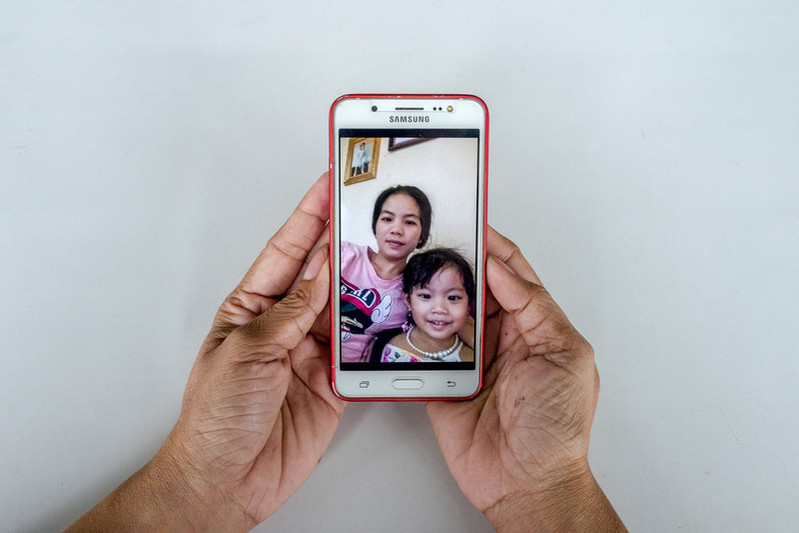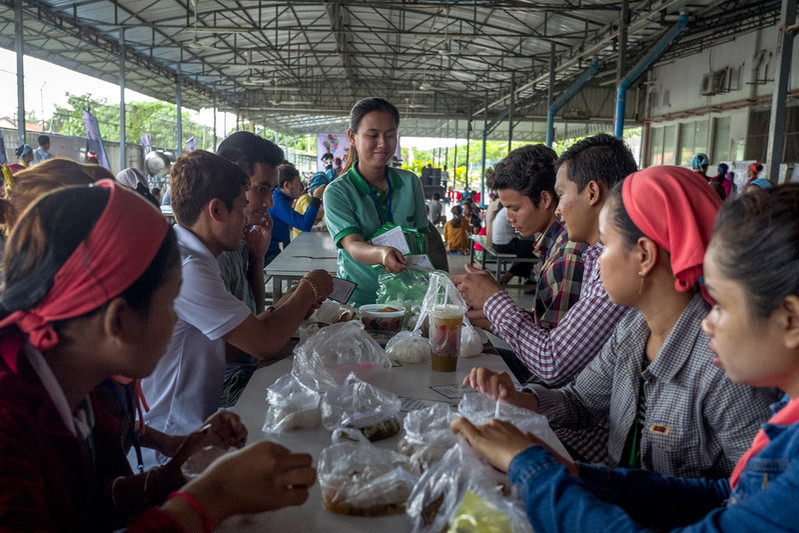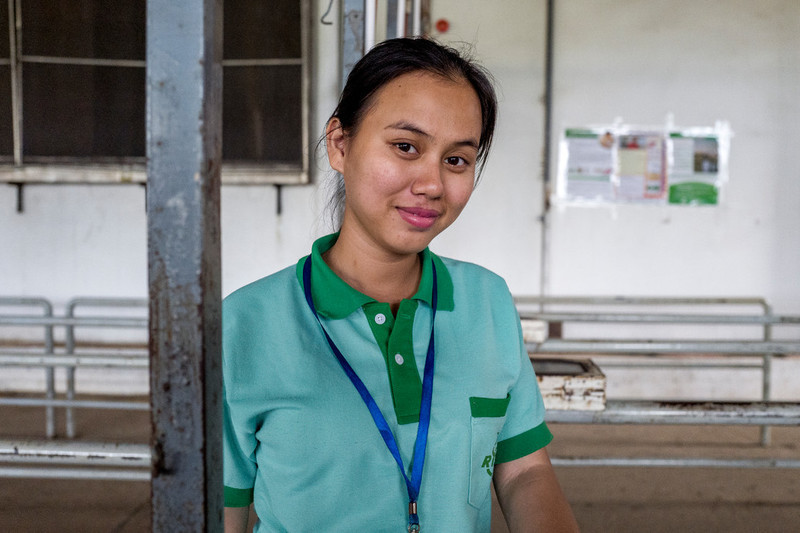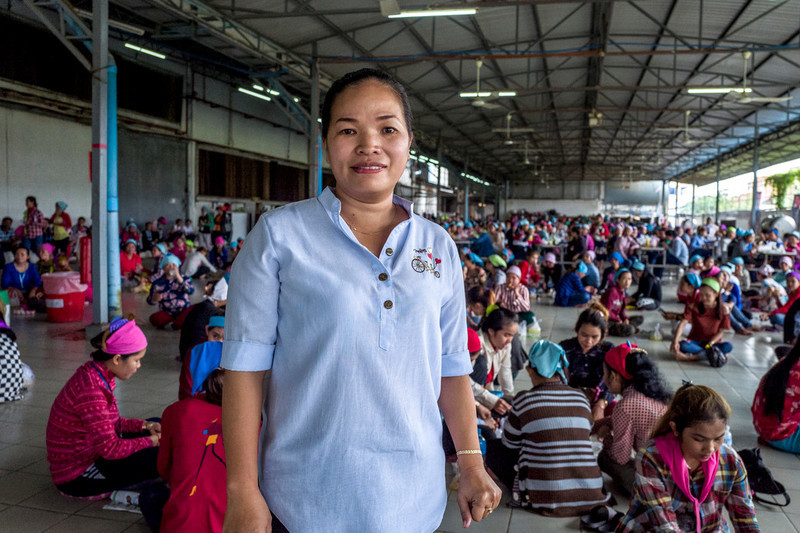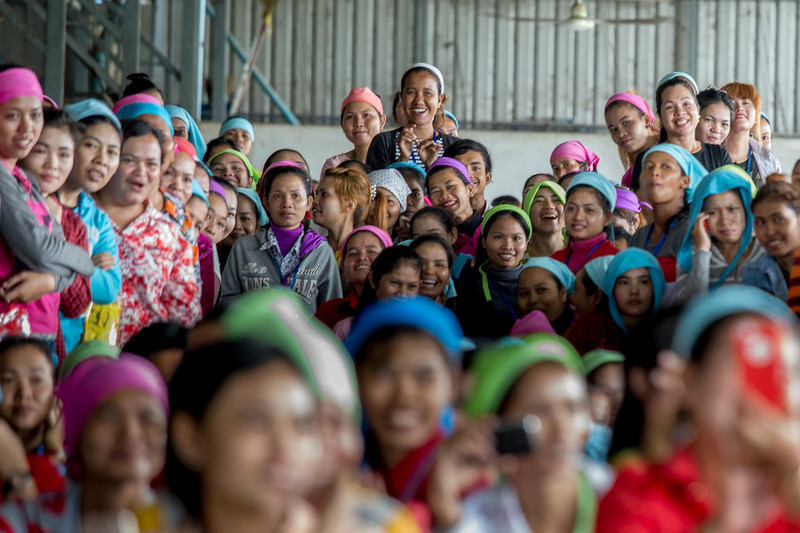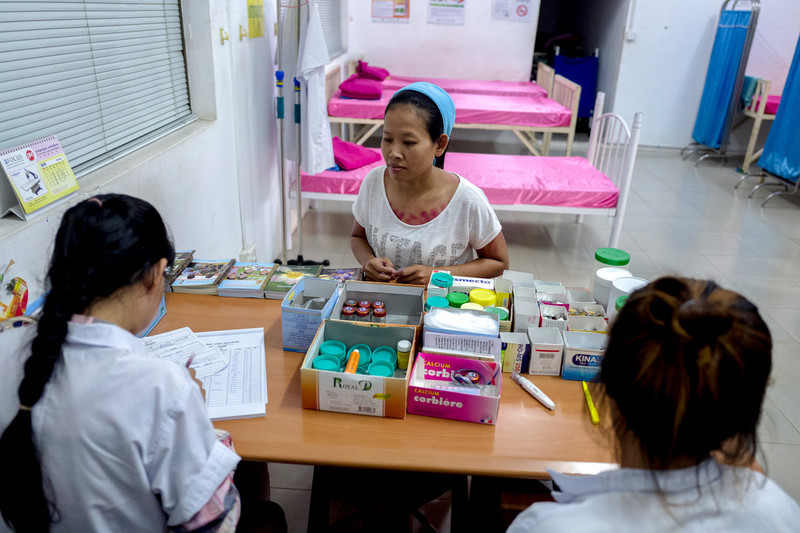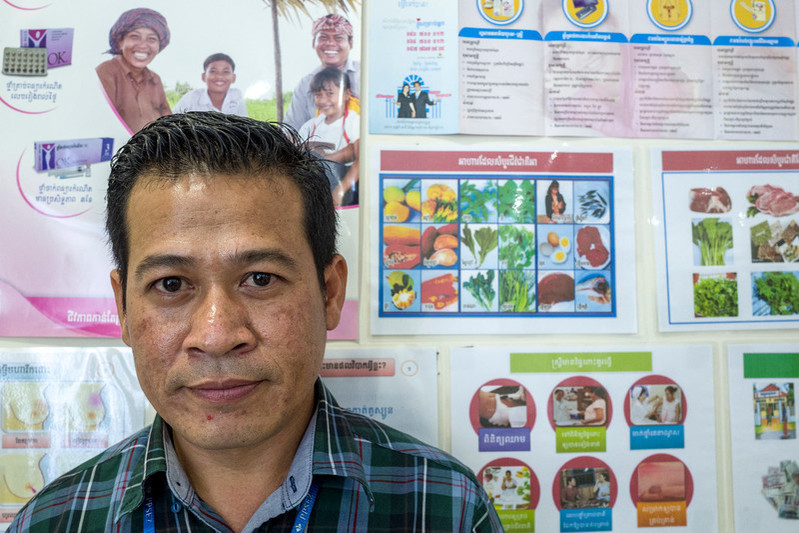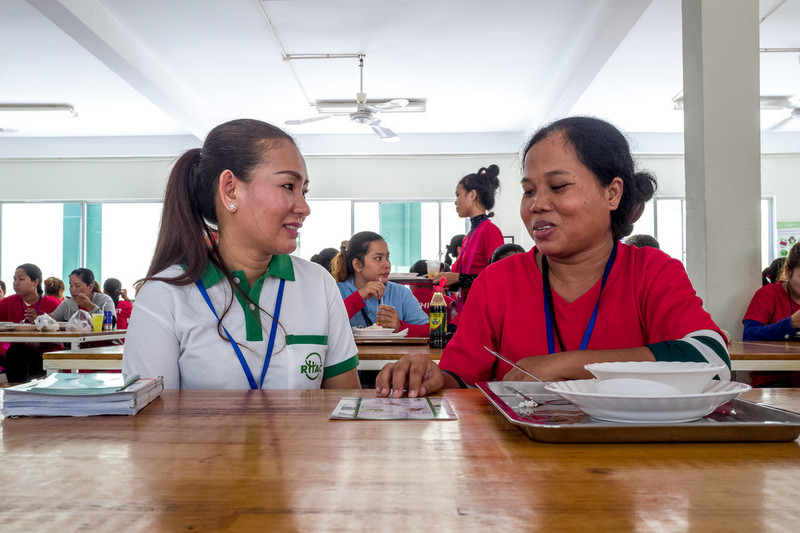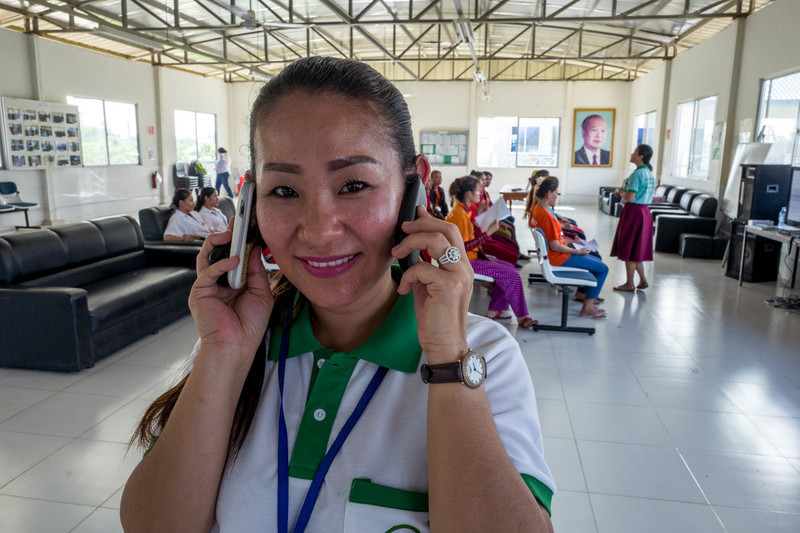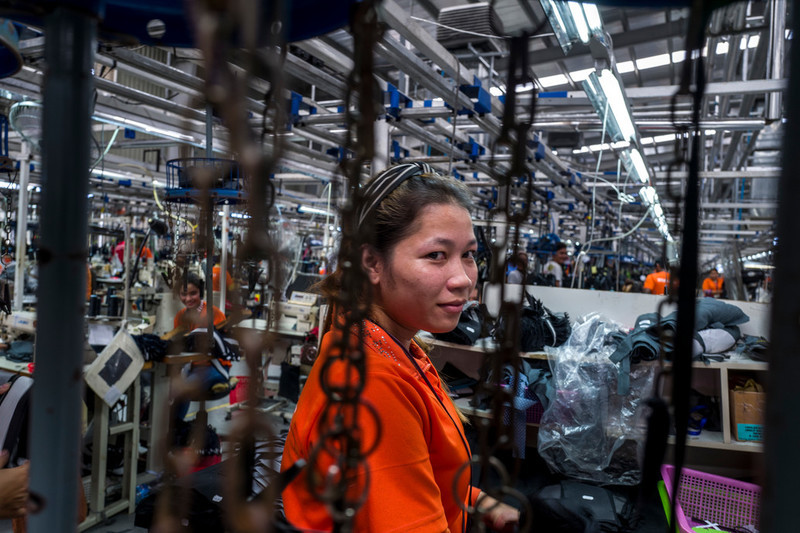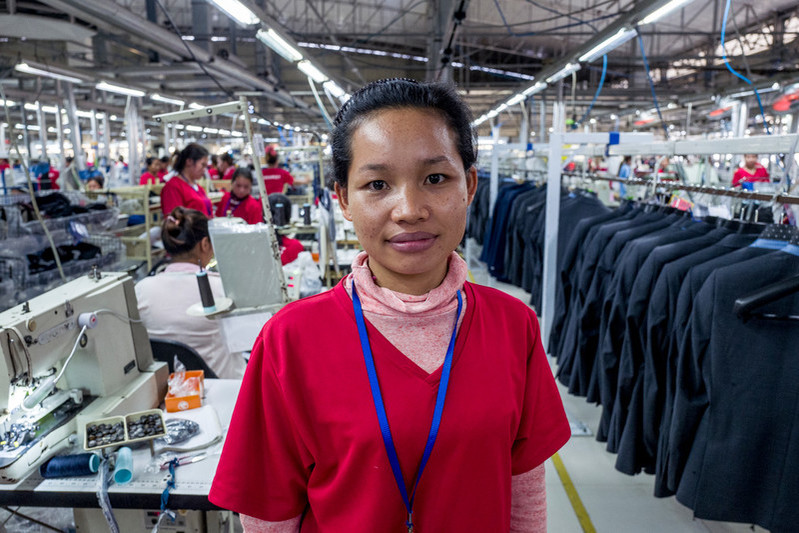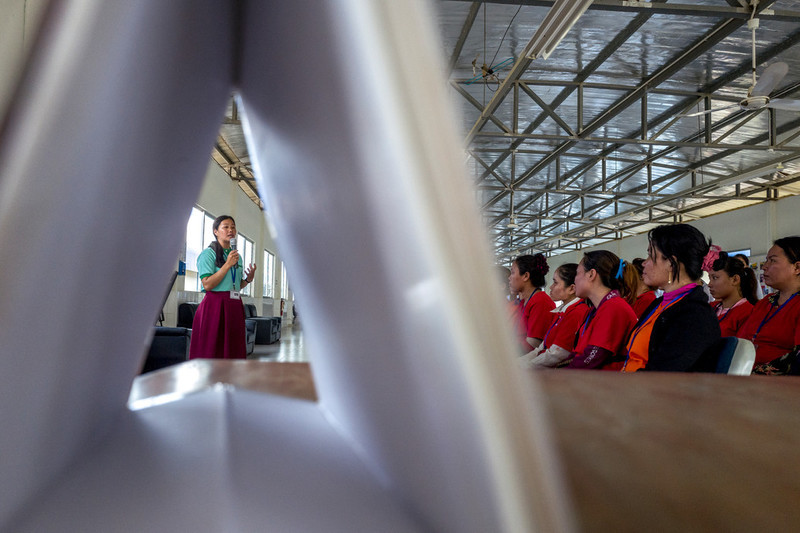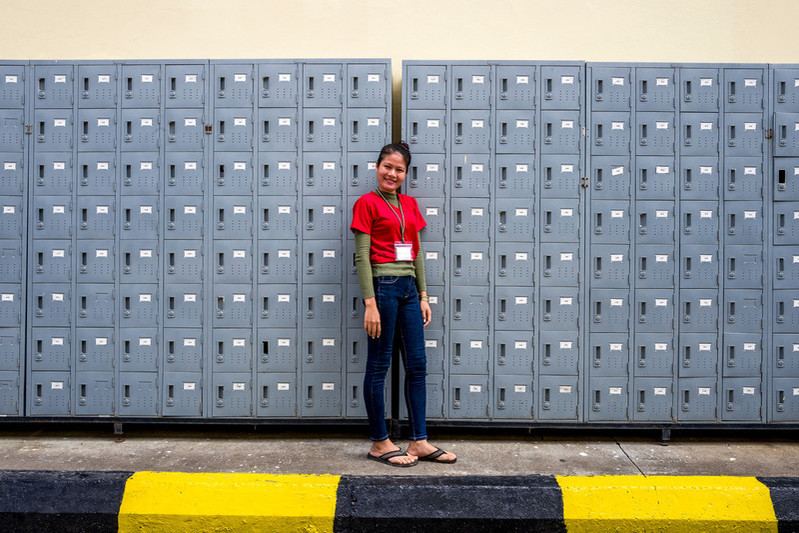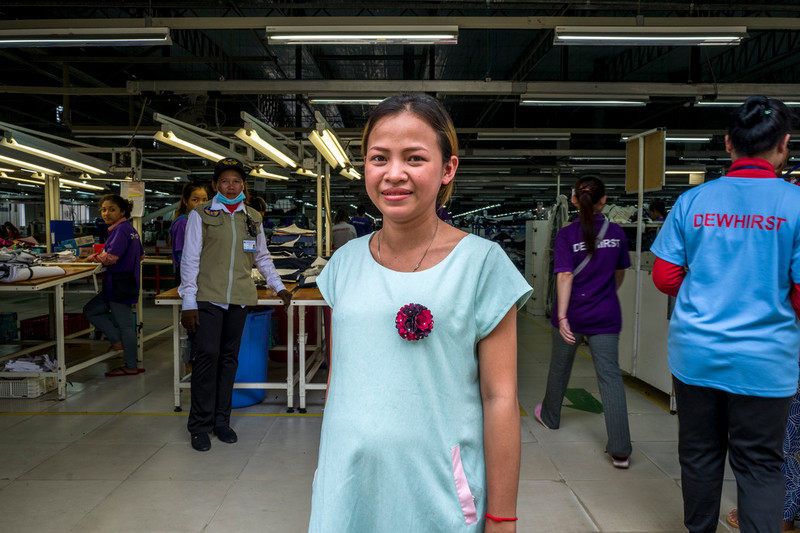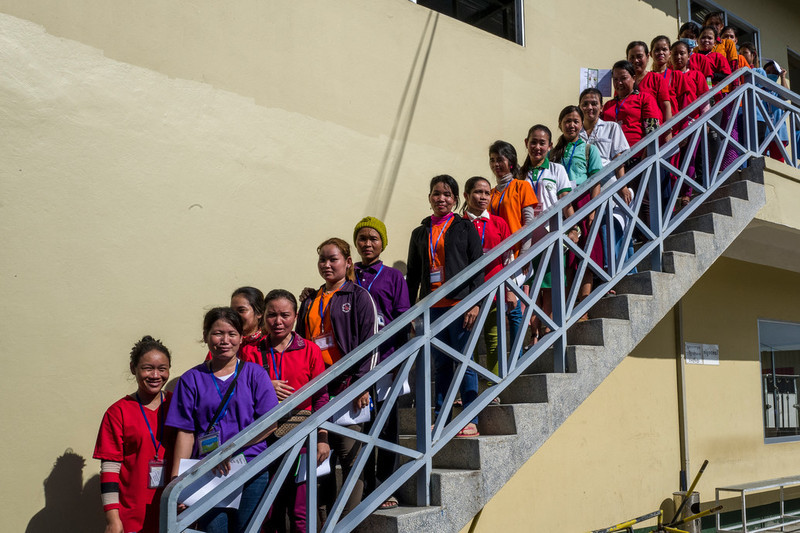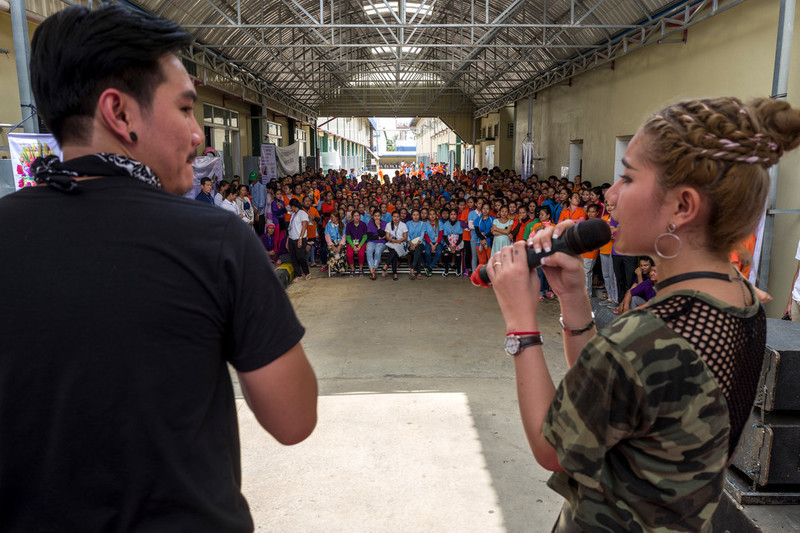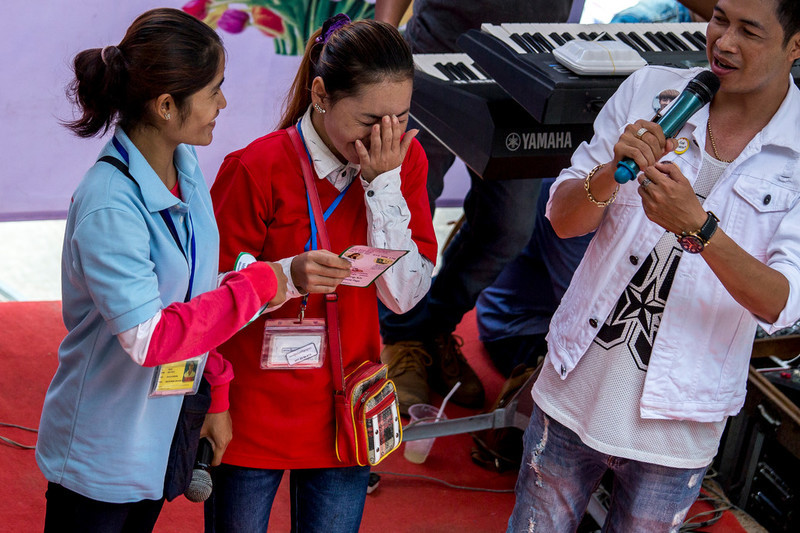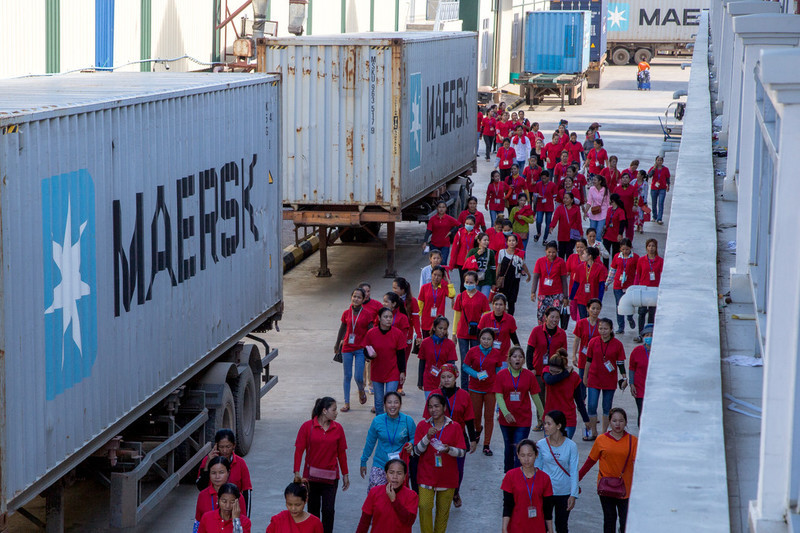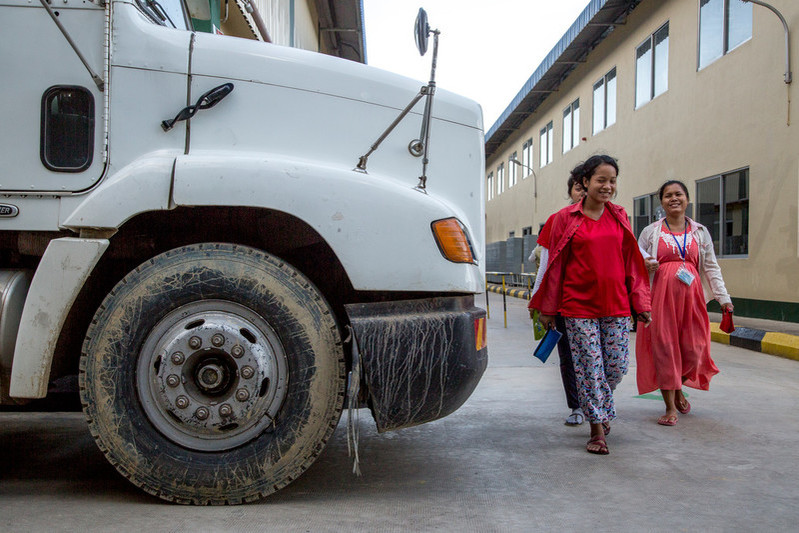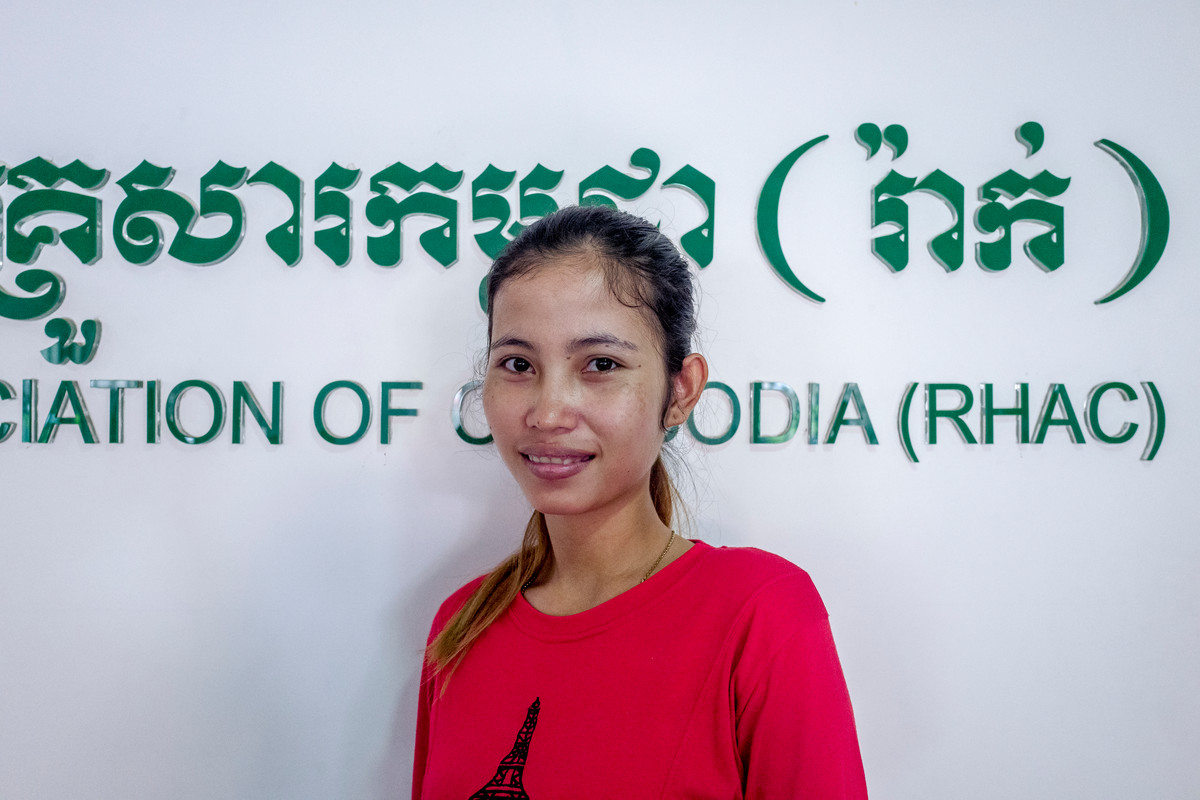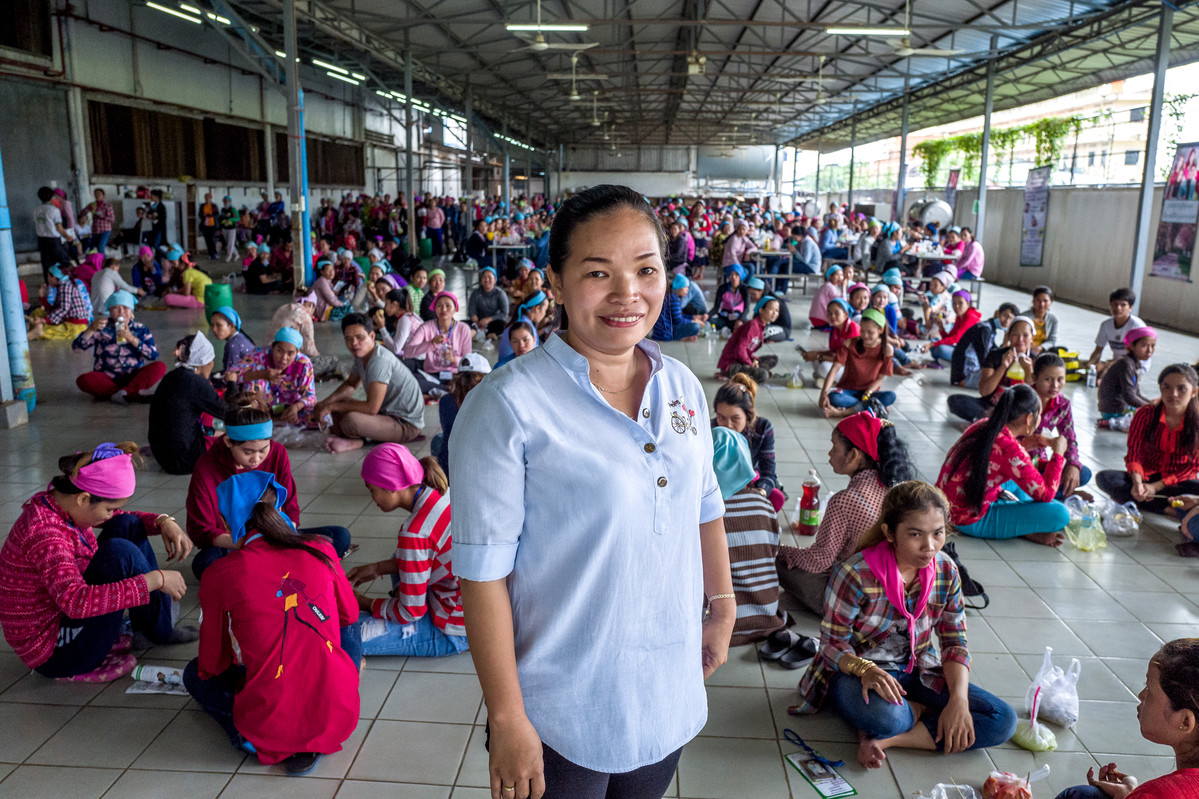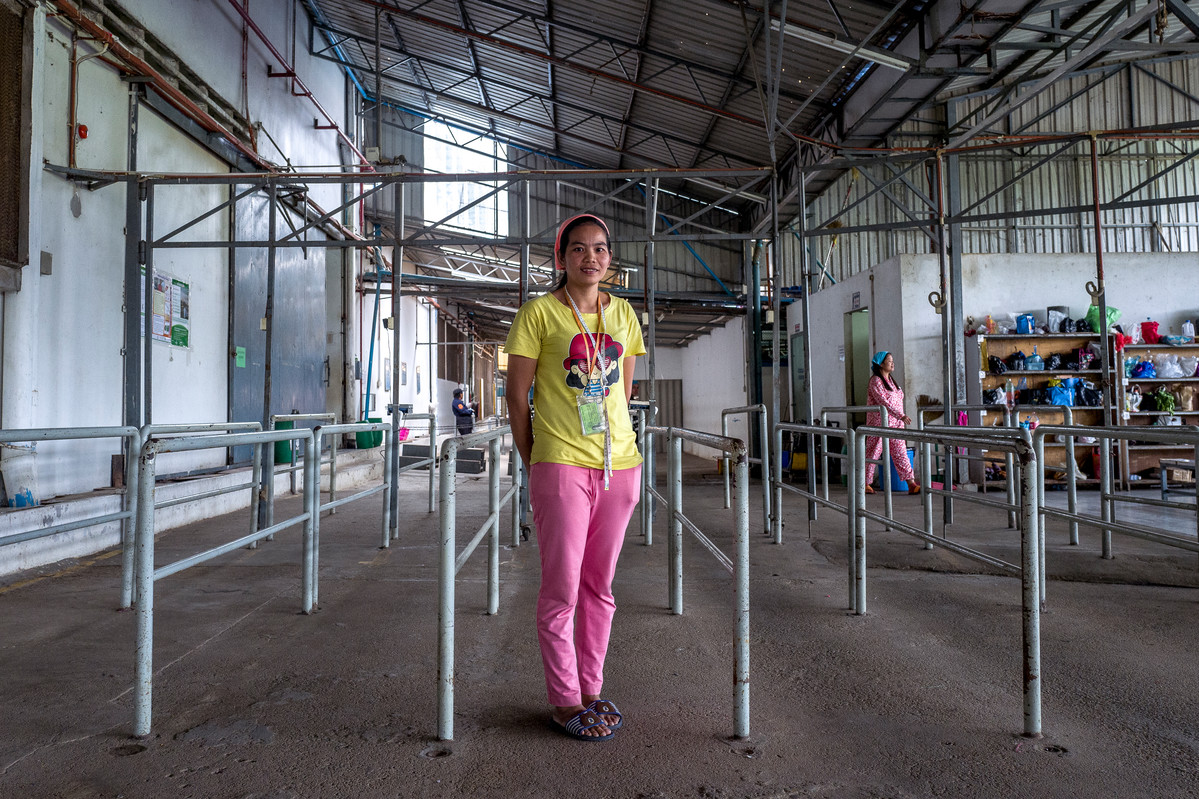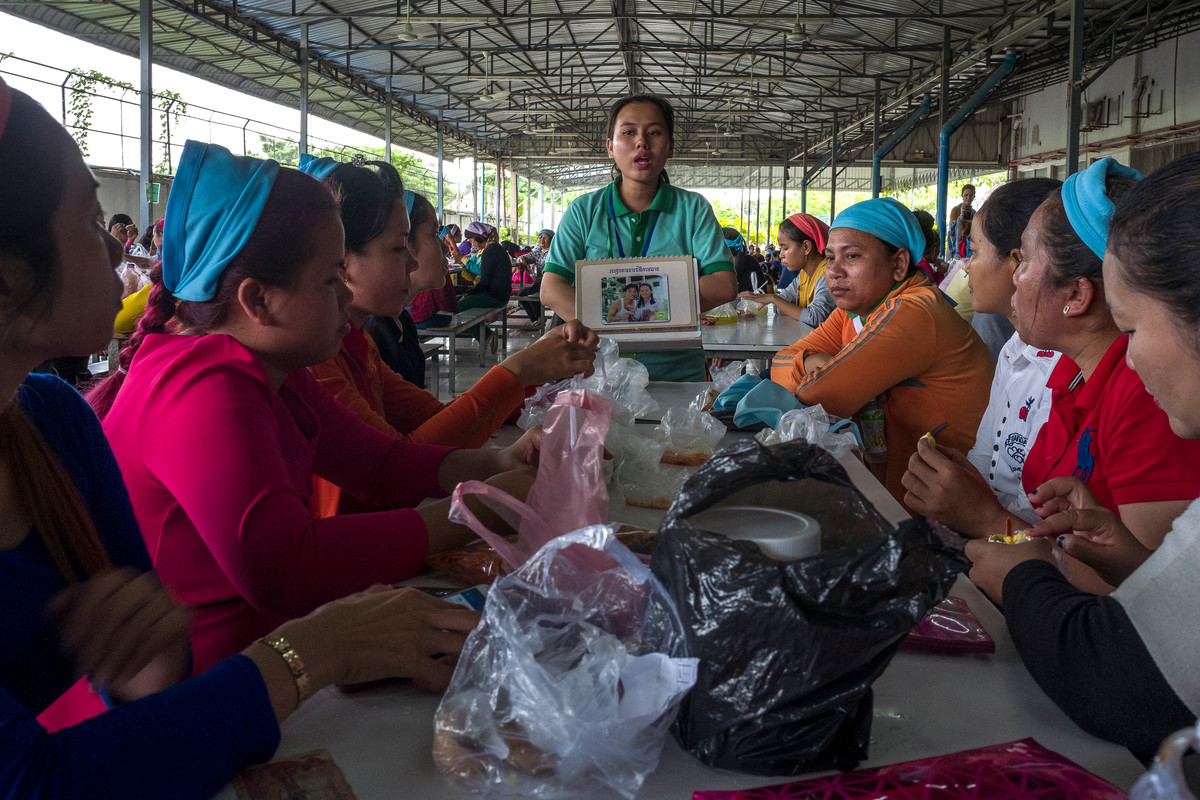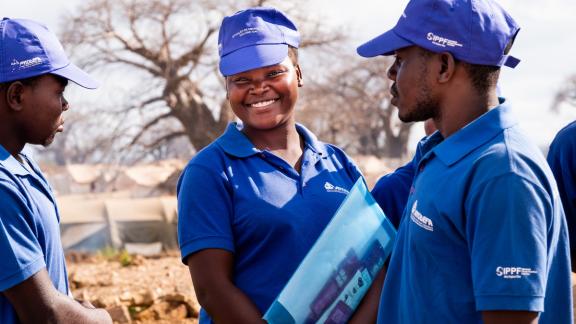It’s lunchtime at Propitious garment factory in Takhmao, and thousands of workers in neon headscarves are gathered around as Khmer pop music rings out across the expansive canteen.As the song dies down, they melt into the crowd and Dr. Veth Sreng takes to the stage, which is adorned with banners promoting the Reproductive Health Association of Cambodia (RHAC).
“Do you know how HIV gets transmitted? Who can get infected?” the community health specialist calls out, undaunted by the sea of women staring back at him. This concert, peppered with such health-related questions (and answers), is typical of the inventive ways RHAC is working with some of Cambodia’s most vulnerable women to improve their sexual and reproductive health outcomes.
About 700,000 people work in Cambodia’s garment factories, many of them migrant women from rural areas who typically possess low levels of education. According to Dr. Sreng, not only do these women often lack crucial health knowledge, but they tend not to trust health providers or know where to access medical care. Meanwhile, “there are private clinics and pharmacies that factory workers sometimes access, but they unpredictably vary in quality and cost,” he says.
Reproductive Health Association of Cambodia, which first took its health outreach programme into garment factories in 1998, now operates in 82 factories that employ a combined total of 130,429 workers. Nearly 28,000 of them have taken part in RHAC-led group discussions and more than 67,000 have attended targeted health days like the one at Propitious.
The clinics work is having an impact. According to a survey of garment workers it carried earlier this year, 36% had visited a Reproductive Health Association of Cambodia (RHAC) clinic before. Factory workers who attended health days were twice as likely to turn to RHAC for their sexual and reproductive health needs. A further 16% of workers said they had sought an abortion in the past, with RHAC the most well-known place to access safe abortions – an encouraging finding given that female garment workers are known to be at risk of unsafe abortions.
Despite these positive results, Dr Sreng said it was often difficult to convince factories to work with RHAC, even after explaining the benefits of free health education for their staff. “They are often afraid that letting NGOs or unions into the factories will create problems such as mobilising and inspiring the workers to advocate for better conditions,” he says. “When they do agree, we can only operate during their lunch time so that we do not disturb their working hours: health services are not usually a priority for them.”
Nonetheless, the bottom line often proves convincing: factories such as Propitious report that allowing RHAC to provide health outreach to workers has helped to reduce absenteeism. As a result, the production chain is broken less often and productivity improves.“Sometimes, after a while, they hear from other nearby factories about the work RHAC does, and then they ask RHAC to come back,” Dr. Sreng says.
RHAC is looking at ways to better reach garment workers who struggle to afford private health services, according to executive director Dr. Var Chivorn. While the NGO’s pricing is on a par with or cheaper than other private clinics or hospitals, government-run hospitals tend to be much cheaper – although the standard of care is usually low. “To improve access to the services among factory workers, RHAC is now working with the National Social Security Fund so that the NSSF will purchase services for the workers,” Dr. Chivorn says.
If the deal goes ahead, all workers under the scheme – which is compulsory in the garment sector – would have full access to RHAC’s clinic healthcare.
when
country
Cambodia
Related Member Association








